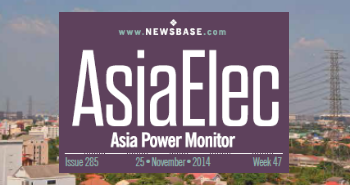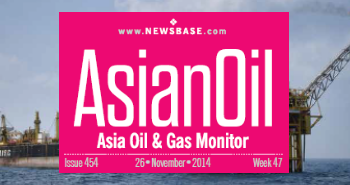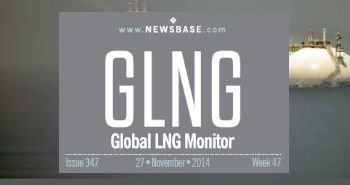TotalEnergies agrees to 20-year LNG purchase deal with Canada’s Ksi Lisims
_Cropped.jpg)
Deal includes acquisition of a 5% stake in the project’s developer Western LNG.
WHAT: French giant TotalEnergies has become the second supermajor after Shell to sign a 20-year offtake deal with Canada’s Ksi Lisims LNG project.
WHY: TotalEnergies stated it was attracted to the project for its favourable location on Canada’s west coast offering a fast, direct shipping route to LNG hungry markets in Asia.
WHAT NEXT: A final investment decision is expected to be taken before the end of the year, with the project expected to come online by early 2029.
Canada’s fledgling LNG sector has scored another win, with the proposed Ksi Lisims LNG project taking a key step forward with the announcement on May 19 of a 20-year offtake agreement with TotalEnergies.
The deal will see the French supermajor purchase 2mn tonnes per year (tpy) of the super-chilled fuel from the project, which is being developed by Western LNG on behalf of its partners the Nisg’a Nation and Rockies LNG. TotalEnergies will also take a 5% stake in Western LNG as part of the agreement. No financial terms of the agreement were released.
The announcement marks an important milestone for the project, which is seeking to take a final investment decision (FID) before the end of year. A target has been set of being commercially operational by late 2028 or early 2029.
It marks the second offtake deal of its kind. In January 2024, the world’s largest LNG trader Shell also signed a 20-year sales and purchase agreement for 2mn tpy from the Ksi Lisims facility.
Indeed, the proposed project is gaining momentum and the announcement of regulatory reforms could assist as well.
Earlier this month, Canadian Prime Minister Mark Carney stated that he could adjust environmental regulations passed by former Prime Minister Justin Trudeau, including oil and gas pipelines, in order to boost investment in major Canadian projects and key industries.
Canada is in the midst of attempting to strengthen trade partnerships with international allies and boost inter-provincial trade as it fends off tariff threats by US President Donald Trump, who is seeking to redefine the trade relationship between the two long-term trading partners.
Currently, all of Canada’s oil and gas that is exported heads to the US, but that is about to change in June, when the country’s flagship LNG project, the Shell-operated LNG Canada begins shipping cargoes to Asian partners.
The Ksi Lisims LNG project is located on a site owned by the Nisga’a Nation near the community of Gingolx in British Columbia, on the border with Alaska.
Boasting a production capacity of 12mn tpy, Ksi Lisims still has some work to do in terms of securing offtake agreements before the project is likely to get the green light.
However, the project has set itself up well, future-proofing itself against potential emerging environmental legislation by adopting some of the greenest credentials for LNG projects.
The facility is expected to possess one of the lowest carbon intensities of any LNG export project in the world, tapping into renewable hydropower from British Columbia’s grid. The project is also committed to being net zero ready by 2030 and will purchase nature-based local carbon offsets.
As a floating LNG (FLNG) facility, Ksi Lisims will also have a reduced land and shoreline disturbance. Samsung Heavy Industries and Black & Veatch will collaborate to build the FLNG.
Nevertheless, the project’s greatest calling card though is its fast and direct access to energy hungry Asian markets. Trading partners such as South Korea, Japan, and Taiwan are all among the top ten global importers of LNG.
Meanwhile, the world’s largest LNG importer China, also has easy shipping access with western Canada, although trade relations have at times been complicated by diplomatic spats.
Moreover, a handful of new entrants in the LNG importing market have emerged in Asia in recent years, including Vietnam, the Philippines and Thailand.
India too is experiencing a boom in demand for LNG, as New Delhi seeks to increase gas demand in the country from 6% to 15% by 2030 as part of its transition away from coal power.
Nevertheless, a few hurdles still exist for the project. In addition to Ksi Lisim’s need for more offtake agreements, it is also facing environmental challenges to the Prince Rupert Gas Transmission Project, which would see a 900-km pipeline built from the Montney shale formation to the facility’s location by Gingolx.
Earlier in May, protesters held sit-ins outside Premier David Eby’s office and also gathered outside the province’s Ministry of Energy and Climate Solutions office.
As well, the Gitanyow Hereditary Chiefs have voiced their disapproval of the project, which would cross over their territory. Meanwhile, the provincial government’s Bill 15, also known as the Infrastructure Projects Act, which would fast-track public infrastructure projects is facing stiff opposition from both opposition parties, the Conservatives and the Greens.
Indeed, the proposed Ksi Lisims LNG project is far from a done deal. A number of hurdles must still be cleared by the $10bn facility. Nevertheless, momentum seems to be on the project’s side with another big offtake agreement helping the project gain steam.





Follow us online